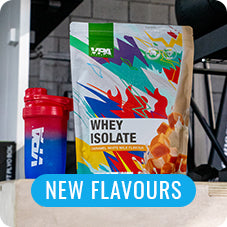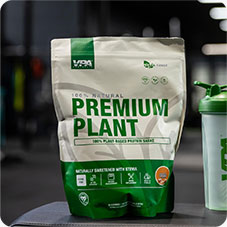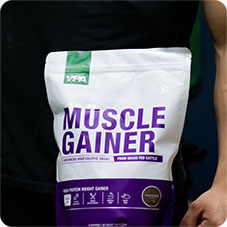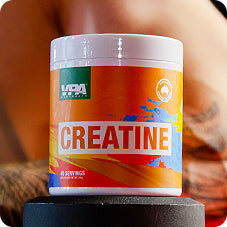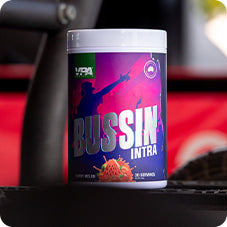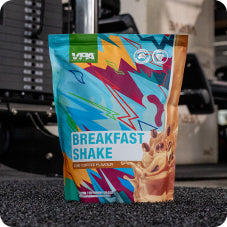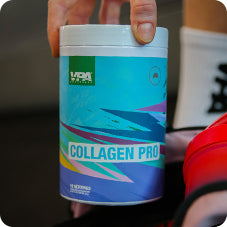Your Cart is Empty
WPI vs WPC – what's the difference?
July 22, 2020 3 min read

If you’re in the market for whey protein, you’ve heard of both whey protein concentrate (WPC) and whey protein isolate (WPI). Are you unsure of the difference between these two products, and which one is best for you? This blog will explain the difference between WPI and WPC so that you can choose the best protein for you.
Protein is perhaps the most important supplement for gym-goers, bodybuilders, and everyday people looking to have more control over their diet. It is a necessity for individuals looking to get fitter, healthier, or stronger protein powders are derived from many different products, however the most effective powders are dairy and whey protein powders. Whey protein comes in two main forms, whey protein concentrate (WPC) and whey protein isolate (WPI). Before we delve into the differences between the two, let’s examine what exactly whey protein is, and where it comes from.
What is Whey Protein?
Whey protein is the powdered by-product of milk and cheese-making. That’s right, you see all those bottles of milk and blocks of cheese in the supermarket? Whey protein is left over from their production, after the process of separating the whey from the milk. You can find a more detailed discussion about whey protein here.
WPI vs WPC – What’s the difference?
Manufacturing process
The nutritional and pricing differences between WPI and WPC result from a secondary step in the manufacturing process. During production, WPC is microfiltered once, while WPI is filtered a second time. This second filtration removes more fat and carbohydrate from the original product, producing a more refined protein. This process means that WPI is a more pure whey protein than WPC.
Macronutrients
Due to being more highly refined, WPI has a higher protein, lower fat, and lower carbohydrate percentage compared to WPC. Good quality WPI is generally around 90% protein by weight, compared to 75-80% for WPC. VPA® pure whey protein concentrate has 23g of protein per serve, 0.7g of fat and 1.5g of sugars from lactose. VPA® Whey protein isolate has 26g of protein per serve, 0.3g of fat, and 0nly 0.3g of sugar.
The lower lactose content of WPI the best protein powder for lactose intolerance. The majority of intolerant individuals can use WPI without experiencing any digestive symptoms.
WPC contains more milk fat than WPI with around 4-7% fat . This is not necessarily a bad thing, as this fat can contain beneficial nutrients not found in WPI.
Absorption
The higher fat and lactose content of WPC makes it a slower digesting protein than WPI. The fact that WPI is more rapidly digested and absorbed into the blood stream, makes it the best choice for taking after training to build muscle and aid recovery. The slower digesting WPC is ideal for those who would like to feel fuller for longer – so it can be ideal for a high protein snack when you have a long time between meals.
Should I choose WPC or WPI?
Choose WPC if you’re after a cheaper, slower-digesting protein that contains lots of macronutrients and bioactive compounds. WPC is a great option to consume throughout the day.
Choose WPI if you’re after pure whey protein powder with lower levels of fat, carbohydrate, and lactose that contains less calories than WPC. WPI is ideal for people who want to get fast digesting protein into their body after a workout, or want to restrict the number of calories they consume. Additionally, those sensitive to dairy or lactose may benefit from choosing WPI over WPC due to the increased protein weight percentage over other compounds.
Sold out
Sold out
Conclusion
So there you have it – the differences between whey protein concentrate and whey protein isolate. As you can see, both forms of whey protein have their strengths and weaknesses, and you may find each of them helpful at different times. It can be very useful to utilise a combination of each type of protein to assist you in reaching your goals.

Sally Mitchell
Sally Mitchell (BSc, MHumNut) is a scientist, university qualified nutritionist and VPA staff member. She brings a nerdy love of numbers, data, and science wit her to VPA. Her favourite VPA product is coffee Breakfast Shake. She enjoys powerlifting and running but, sadly, does both poorly.
Also in Supplements

Science-backed Benefits of Medium Chain Triglycerides (MCTs)
February 19, 2024 3 min read
Discover the science-backed benefits of medium chain triglycerides (MCTs) and learn how to incorporate them into your diet. Find out more at VPA Blog.
Read More
EAAs vs BCAAs
December 02, 2023 5 min read
Discover the differences between EAAs and BCAAs and their importance in our body. Learn how to choose the right amino acid supplement for your fitness goals. Find out the side effects and risks of EAAs and BCAAs supplementation. Explore more articles on supplements at VPA.
Read More
What are the benefits of N-Acetyl Cysteine (NAC)?
September 19, 2023 4 min read
Discover the benefits of N-Acetyl Cysteine (NAC) for respiratory health, mental health, liver protection, immune system support, and more. Learn about natural sources of NAC and its overall benefits.
Read More Recent Articles
- Science-backed Benefits of Medium Chain Triglycerides (MCTs)
- EAAs vs BCAAs
- What are the benefits of N-Acetyl Cysteine (NAC)?
- L-Lysine: Benefits, Side Effects, and Best Sources
- The Amazing Health Benefits of Glycine: A Complete Guide
- Essential Amino Acids: Unlocking Optimal Health and Performance
- L-Tyrosine - Boost Your Brain, Mood, and Overall Well-Being
- The Incredible Benefits of Wheatgrass: A Nutritional Powerhouse for Optimal Health
- The Power of Glutamine: Unveiling Its Benefits for Gut Health, Muscle Growth, and More
- Benefits of Reishi Mushroom



